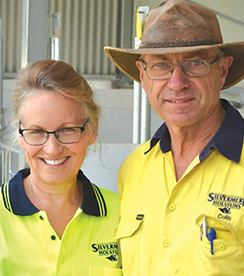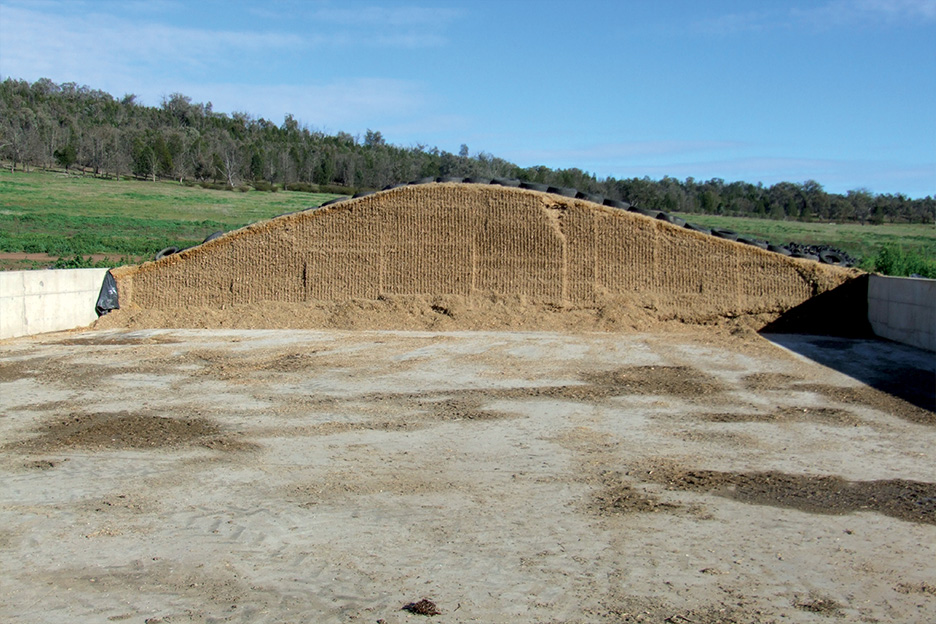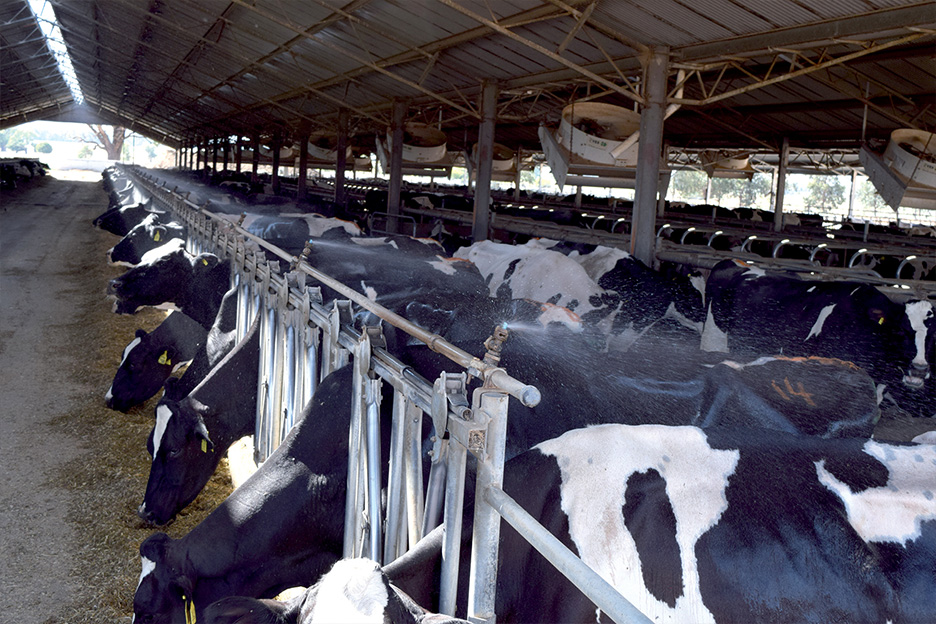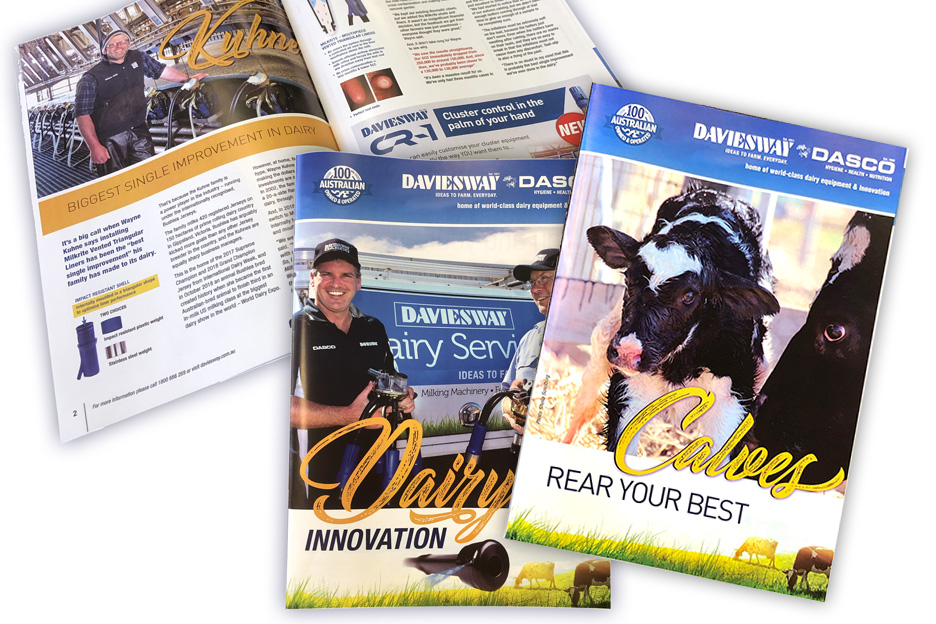
> Fans installed at the end of 2017 made a big impact this summer, helping hold Silvermere's average per cow production through January at 41 litres.

A calculated decision to house their herd during the millennial drought against the wishes of their neighbours paved the way for Colin and Erina Thompson to thrive in dairy.
Today at Silvermere Holsteins in southern New South Wales, the couple milk 320 cows thrice a day in a free-stall operation that will soon house all their animals aged from seven months.
The example set by the couple has turned them into an industry beacon by proving that housing cows within a family-farming operation without outside investors – when done right – can, and does, pay.
Colin recently shared their experience – including the numbers everyone needed to add up the price of cow comfort for themselves – during a barn-solutions workshop, hosted by Daviesway/DASCO in Echuca in northern Victoria.

> Silvermere Holsteins is moving to house all animals aged from seven months on its NSW holding.
COW COMFORT ADDS UP
His presentation included Silvermere’s more recent decisions to house all their young stock, add fans, and the water efficiencies they have been able to achieve along the way on their on 372-hectare (919-acre) property.
“I remember doing the budget on whether I’d do a free stall or not at the very beginning,” Colin said. “On my numbers I worked out I needed an extra three litres per cow over five years to pay for the project.
“Five years came and went, and we’re up to an extra 10 litres per cow per day, and still progressing. This system of farming may look complicated, but it does work.”
Colin said at the end of June 2011, they had an annual production of 3.3 million litres, by the end of June 2018 that had moved to 4.46 million litres, and this year they are projected to break through the 4.5 million-litre mark.

> Quality forage is integral to Silvermere's success.

> Housing young stock has given Silvermere's first calvers a solid grounding in understanding how to access feed using headlocks before they join the milking herd.
FANS OF HOUSING YOUNG STOCK
Colin and Erina recently decided to add fans and to house their young stock.
“Every decision I make to spend more money has to support itself,” Colin said. “The fans were initially a tough one for me to quantify and to budget for … until I did it.
“We added the fans at the end of 2017. Now that we’ve lived with them for a full summer, I would echo every good thing that the experts have said about them.
“We had many days of more than 40 degrees this summer, and our average per-cow production through January was 41 litres. The fans made a big difference when it came to holding average production, and there were no flies through the shed to speak of; and, I did offset some of the running costs by putting solar panels on the roof.”
Colin said the decision to build another free-stall shed, which houses heifers aged from 14 months, has also proved to be a winner. They teach calves from two months of age to cope with head locks. The combination makes their eventual transition into full free-stall life seamless.
And, having dry cows and pregnant heifers comfortable during the hot summer months, proved its worth 60 days into lactation when they started joining cows that hadn’t been heat stressed in their dry period.
“We are now planning to house everything from seven months of age for the rest of their lives,” Colin said.
“People ask me, ‘Why would you house your heifers?’ And, the answer is simple really: it works so well. The heifers are well-fed and well-grown, and it has freed up 50ha that we can now crop on. At $10,000 a hectare, that's a significant sum.”
BETTER WATER EFFICIENCY
Water is also the burning issue for many Australian dairymen. Colin said confined housing has helped them to manage that.
“Dairy Australia [DA] did a study in 2010 regarding water use on farms, and one thing I did get out of it back then – which I assume was done mostly on grazing systems – was that farmers were getting 1200 litres of milk per megalitre of water used.
“So, I had a look at our system. We were getting around 7500 litres of milk/ML of water used. That’s six times what DA found. And ours also included all the feed grown for our dry cows that wasn’t turned into milk.
“I really do believe there are huge water-efficiency gains in these confined-housing farming systems. It takes as much water to grow a crop, but you get so much more milk from that crop in confined housing.”

> It takes as much water to grow a crop for a herd to graze as it does to make fodder for a housed herd, but you get more milk from the crop in confined housing, Colin Thompson told his peers.

> Housing heifers freed up an additional 50ha for cropping in an area where land prices are sitting at $10,000 a hectare.
MANAGE IT RIGHT
Which brought Colin to another important point.
“The best facility won’t work if it’s not managed right.
“And part of that management is forage quality. We’ve been working with consultants from the USA for the last five years now, and I can’t put enough emphasis on harvesting at the right time, with the right dry matter, the right compaction, and how important it is to handle that forage right so you minimise wastage.
“They may seem like little things but they are extremely important to me. We want to make sure that everything we put before the cows is food that we would eat ourselves.
“I believe there is great potential for cereal silage. It’s a low-water-requirement crop, which is high yielding, and you can harvest it regularly.”
Colin said the opportunity to buy some additional land with high security water five years ago had given them peace of mind and a solid diversification.
“It allows us to be more than self-sufficient. We decided rather than to build more free stalls and to milk more cows, that we’d consolidate and make and sell 1200-1500 tonnes of lucerne hay to the horse industry every year.
“I know I’d much rather see the hay truck going out the gate, than coming in,” he smiled before adding, “but it’s also given us a secure forage for our dairy.
We don’t have to sell the hay, but when we have enough, we can supplement our income with hay sales.”
HOMEWORK NEGATES FEAR
With plenty of research about the “dos” and “don’ts” of confined housing, Colin urged everyone considering the move to do their homework for their own personal situation.
“I think fear holds a lot of people back,” he said. The key is people really need to do their homework properly, so they can make very informed decisions, and they need to utilise the really good professional advice that is around these days.
“It does seem daunting, complex and different. Which it is. But in actual fact it's not difficult to operate in, cows love repetition, and it can be very worthwhile because it does take the volatility out of dairying.”

